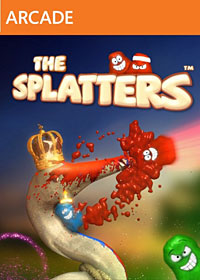
It’s difficult to imagine a game like “The Splatters” existing without the runaway success of “Angry Birds.” Although it shares some DNA with a few other games as well (namely, the “Worms” series), SpikySnail’s physics-driven puzzler owes a lot to the Rovio action-strategy game. Both titles are pretty similar in style, only instead of flinging birds at green pigs, you’re launching candy-colored blobs across the screen in an attempt to disarm bombs. The liquid that bursts out of the Splatters when they explode must match the same color of the bombs in order to be successful, with an assortment of unlockable moves at your disposal to maneuver around obstacles, reach strategically placed bombs and increase your score through combos.
Though “The Splatters” would probably be more suitable on a mobile device, there’s more than enough content (including three game modes and a feature called Splatter TV that lets you share clips with your friends) to warrant its inclusion on Xbox Live Arcade. But while “The Splatters” is a lot of fun to play at first, it eventually becomes a little monotonous as the challenges and uninspired maps start to bleed into one another. You probably wouldn’t notice it as much if you were just playing a few levels on your phone, but in its current form, that lack of variety is the crucial difference between a good game and a great one.






